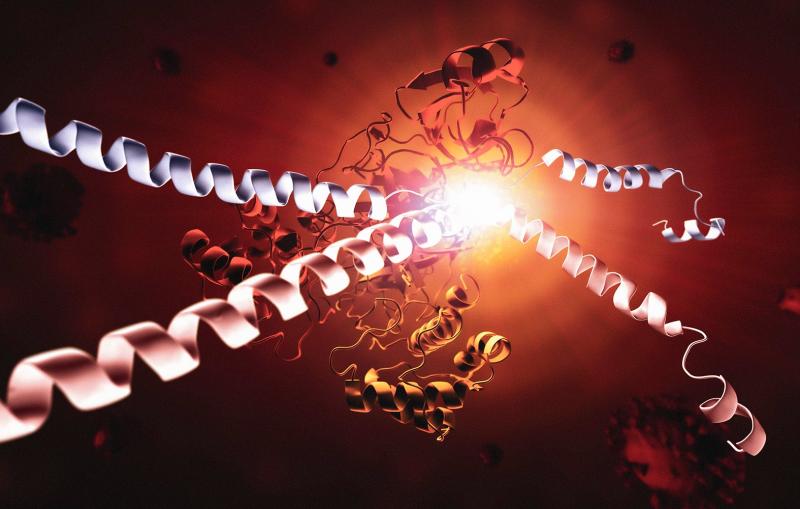Illustration
This image shows the SARS-CoV-2 virus's main protease, Mpro, and two strands of a human protein, called NEMO.

SLAC has a unique set of tools for looking at viruses, microbes, cells and the tiny machines inside the cell that perform all of life’s functions. This research gives scientists a better understanding of how living things work, what makes us sick and how we can prevent and treat disease.
Related link:
Science of life
This image shows the SARS-CoV-2 virus's main protease, Mpro, and two strands of a human protein, called NEMO.
